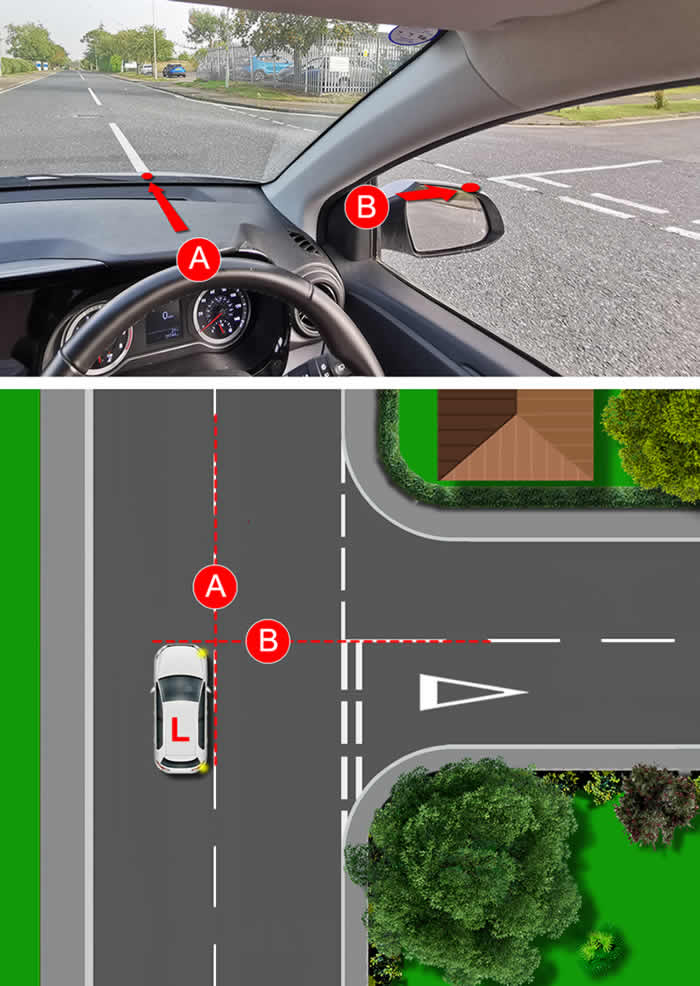For those just starting out driving, reference points are a valuable aid. New drivers often struggle in understanding where the car is in relation to the road. By using reference points, this process becomes much easier.
We use many reference points throughout the learning to drive process. These particular reference point can help a leaner driver to make a right turn, from major to minor road.

Positioning Your Car for a Right Turn
On the diagram, you can see reference point A can be used to help with positioning your car just left of the centre of the road. On a quiet road, your supervising passenger can help you to position your car to the left of road centre, ideal for turning right.
Then, look where the centre road marking comes down the road and where it stops at your car’s dashboard. This can be used as a reference point. You can either memorise where this reference point is, or place a small sticker there.
The reference point location will vary slightly, depending on your car and seat placement. On roads without a centre marking, you’ll need to imagine where the centre road markings are.
Point of Turn
Reference point B is for your point of turn. We’ve already explained what the point of turn is in the correct road position for making a right turn tutorial. You can use this reference point for helping to establish where the point of turn is.
Again, start off by asking your supervising passenger to establish the point of turn for you. Then, from the road that you’re going to be turning into, look where the centre line comes down the road and stops at your car. It’s usually at the top of car’s door mirror. Again, the reference point location may vary depending on your car and your seat position.
Use of Reference Points
Some learner driver’s spatial awareness is better than others. Some find reference point hugely beneficial, while others have less need for them. As you gain more experience with driving, your reliance on reference points will become reduced.